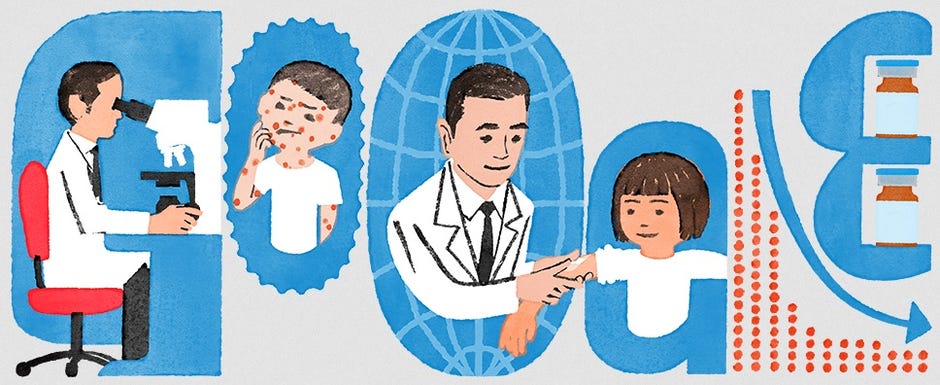On February 17, Google honors a Japanese scientist Michiaki Takahashi on his 94th birthday. He died on December 16, 2013, due to heart failure at 85 years of age. Takahashi is famous for his research on measles, polio vaccines, and the development of the varicella vaccines. Google also changed its logo on Thursday in 13 countries to a doodle to honor great the Japanese scientist.
Dr. Michiaki Takahashi was born on 17th February, 1928 at Higashisumiyoshi-ku, Osaka, Japan. Takahashi was a Japanese virologist and was well known for his first chickenpox vaccine invention. He effectively produced v-Oka and developed the “Oka” vaccine. It is a live-attenuated virus strain of the varicella-zoster virus. Takahashi earned his medical degree in 1954 from the Medical School of Osaka University. He completed the Graduate Course of Medical Science in 1959, especially in poxvirus virology.
Takahashi joined the Research Institute for Microbial Disease of Osaka University and became an assistant professor. He played an important role in researching and developing vaccines for measles, mumps, and rubella. He accepted a research fellowship at Baylor College and moved to the United States with his wife and two children in 1963.
Chickenpox in Takahashi’s Family
He discovered the development of varicella in his 3 years old son after contacting a neighboring family’s girl in Houston, in 1964. Takahashi interviewed the Financial Times published in 2011. He said the girl was with his family as he detected a blister-like rash on the head of the girl. Takahashi recognized the symptoms more critically because there wasn’t any treatment available. He also discovered the development of severe symptoms in his son with a high fever and vesicles covering the whole body.
Dr. Takahashi said the symptoms in his some developed rapidly and severely. He started experiencing issues in breathing and stopped talking. He and his wife just keep watching their son day and night. But the symptoms efficiently improved with time and his son recovered. He got good knowledge regarding the severity of varicella, in spite of considering it as a mild illness. Takahashi then realized that he should use his experience and knowledge of viruses to develop a vaccine for chickenpox.
Research and Development for Vaccines
Dr. Takahashi began his research with live development and VZV (varicella-zoster virus) in human and animal tissues. There were various issues regarding the vaccination which was causing other health complications. Some of the concerns resulted in powerful resistance to the development of effective treatment. He said there was fear at that time regarding the chickenpox virus supposedly causing cancer. A successful development of the varicella vaccine will provide extraordinary benefits.
Takahashi was persuaded of the suitability for the treatment and resumed his research. Moreover, he isolated VZV from the vesicular fluid of a child with varicella and used it to develop an effective varicella vaccine. It is important that the family name of the child was Oka, so he named it the Oka strain. He continued research after safe studies and clinical trials. The director of the Division of Pediatric Infectious diseases at Columbia University Center, Dr. Anne A Gershon issued a statement.
Gershon said the vaccine fools the immune system to determine it has experienced this disease before. Dr. Takahashi’s son contracted the disease again in 1974. It raised concerns for the first time about the effectiveness and safety of the varicella Oka strain vaccine. At least 8 European countries approved the treatment and use of vaccines in 1984. The WHO recognized in 1985 that the Oka strain was efficient to produce a varicella vaccine. Japan approved the use of the varicella vaccine in 1986 and the US approved the treatment in 1995.
